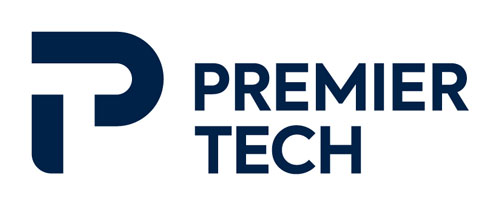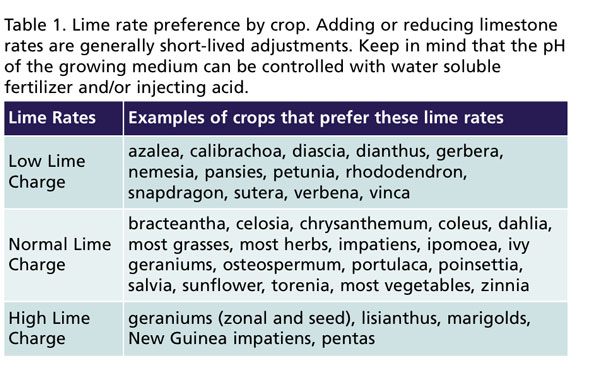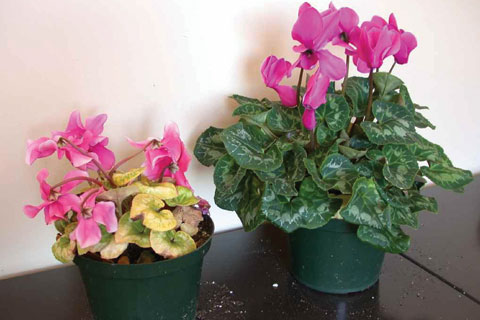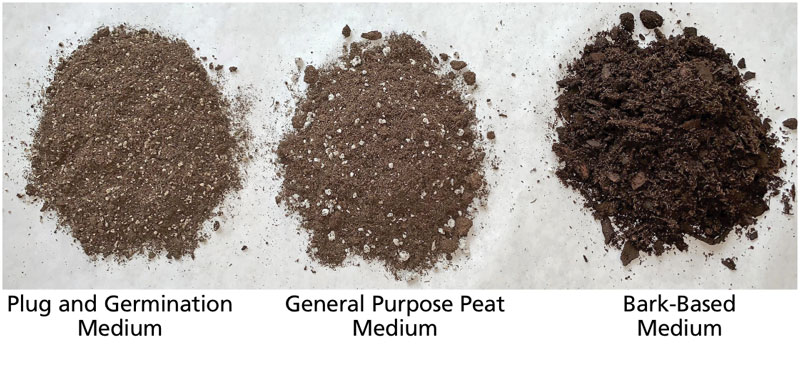7/1/2020
Media Matters
Troy Buechel

A general-purpose growing medium works well for most growing applications, but not all. For example, it’s best to germinate seed or root cuttings in growing media with fine peat, vermiculite or other components. For large outdoor perennials and nursery crops, a growing medium with a high percentage of large bark is preferred. So the ideal growing medium depends on the crop type, stage of development and configuration of the container, but also cultural practices and seasonality.
Seed germination, liner growing media: The size of the growing medium particles often dictates their intended use. Germinating seeds or rooting cuttings occurs in small cell plug trays filled with germination/young plant growing media formulated with fine peat, coir, perlite and/or vermiculite.
Fine components fill small cells uniformly, whereas general-purpose growing media are composed of large particles that fill each plug cell variably and inconsistently.
For example, one cell may contain large particles, so it dries out rapidly, and forms air pockets around seeds and cuttings, which inhibits germination or rooting. Another cell in the same tray may have fine components that retains water. Consistency in a plug tray from one cell to another is critical for uniform germination of seed, rooting of cuttings and subsequent growth.
Transplant or growing-on growing media: Once a plug or liner is ready to be transplanted into a larger container, there are many different growing media that can be used. This is where the crop type can be matched with a specific growing medium based on the growers’ needs. But first, let’s discuss the chemical properties of transplant growing media and then the types of transplant growing media.
Chemical properties of transplant growing media
Starting pH: The target pH of almost all transplant growing media is 5.8 (+/- 0.2). The starting pH is adjusted with limestone added to a growing medium, which can be adjusted to accommodate water alkalinity and potential pH issues. Most growing media companies offer a standard lime rate in this range to provide an ideal starting pH for most crops. However, if the alkalinity of irrigation water used is high, pH can rise out of the desirable range for plant growth.
To counteract this, irrigation water with an alkalinity above 250 ppm CaCO3 can have acid injected to reduce alkalinity and/or fertilizers with high “potential acidity” can be used to minimize climbing pH in the growing medium. If this doesn’t work, then a low-lime growing media can be used for crops that are sensitive to high pH (Table 1).

If the water alkalinity is below 50 ppm CaCO3, use fertilizers with “potential basicity” to minimize pH drop in the growing medium. If this doesn’t work, then a high-lime growing medium may be needed for crops that don’t like low growing medium pH (Table 1).
Starter fertilizer charge: Although not a consideration when selecting a growing medium, most have an added starter fertilizer charge to help plants acclimate and get established. Depending on the manufacturer and the product’s intended use, E.C. can range from 0.5 to 2.5 mmhos/cm and the starter charge lasts about seven to 10 days, after which fertilizer must be applied at recommended rates throughout the crop cycle.
Categories of transplant growing media
General-purpose, peat-based growing media: General-purpose, peat-based growing media are formulated with a high percentage of Canadian sphagnum peat moss, along with perlite, vermiculite, coir or wood fiber. With moderate to high water-holding capacity and good air porosity, they’re ideal for year-round production of most crops grown in cell packs, pots and hanging baskets indoors or in a greenhouse. For crops produced outdoors in larger containers, these products can be used, but some growers prefer peat/bark-based growing media (Table 2).

High-porosity growing media: These products are also formulated with Canadian sphagnum peat moss, but contain higher percentages of perlite (25% to 40%) or bark (30% or more) to provide slightly lower water-holding capacity compared to general-purpose, peat-based media and have high air porosity, so when saturated, there’s plenty of oxygen to promote active root growth.
Table 2 lists some of the crops that benefit from these growing media, however, high-porosity growing media are also ideal for crops grown late fall through early spring when the growing medium dries out slowly and is easier for employees to overwater. In the later scenario, it’s best to have a biofungicide incorporated into the growing medium to reduce root diseases that can occur with overwatering.
 Pictured: The cyclamen plant on the left has root rot caused by Rhizoctonia. High-porosity growing media can help reduce stress, which often increases plant susceptibly to root rot pathogens, since plant roots have access to more oxygen. However, to truly help reduce root disease, use a high-porosity growing medium with a biofungicide pre-incorporated.
Pictured: The cyclamen plant on the left has root rot caused by Rhizoctonia. High-porosity growing media can help reduce stress, which often increases plant susceptibly to root rot pathogens, since plant roots have access to more oxygen. However, to truly help reduce root disease, use a high-porosity growing medium with a biofungicide pre-incorporated.
Peat-bark growing media: Peat-bark growing media are formulated with Canadian sphagnum peat moss, 15% to 60% pine or fir bark, perlite and/or vermiculite. Products used for greenhouse production or indoor growing have bark chips a half inch or smaller, low water-holding capacity similar to high-porosity growing media and moderate air porosity similar to general-purpose, peat-based growing media. This is assuming the bark component has few fines (<1/8 inch) that decrease air porosity and slow the dry-down rate of the growing medium. Peat-bark growing media are used for 3-in. pots or larger grown in the greenhouse.
Greenhouse peat-bark growing media are also used for outdoor perennials and mums due to their higher bulk density (so the wind doesn’t tip over the containers) and drainage in case of frequent rainfalls. For large potted perennials and nursery crops, peat-bark growing media with a higher percentage of bark and larger particle size are used since they have a lower water-holding capacity, dry out rapidly and can be watered frequently without the concern of significant root disease issues.
Chunk coir growing media: Chunk coir growing media are a blend of Canadian sphagnum peat moss, chunks of coir from the coconut husk and may or may not have perlite. The chunk coir retains water, giving these products high water-holding capacity, but the particles also provide high air porosity. It’s designed for 6-in. containers and larger, but especially for crops that are finished in the container that will be used by the homeowner.
These products are used to ensure homeowner success. High water-holding capacity may not be ideal for growing hanging baskets or patio pots in the winter, but it’s ideal for the homeowner who doesn’t have to water as frequently during the summer, since the coir chunks help to absorb and retain water, so a container dries out less often.
 Pictured are three different types of growing media: A plug and germination growing medium; a general-purpose, peat-based growing media; and a bark-based growing medium. The texture of each varies from fine to coarse and water-holding capacity goes from high to low.
Pictured are three different types of growing media: A plug and germination growing medium; a general-purpose, peat-based growing media; and a bark-based growing medium. The texture of each varies from fine to coarse and water-holding capacity goes from high to low.
In general, small particle growing media are used for small cells, medium particles for medium-size containers, and growing media with large particles are used for large containers. Although there are more factors to consider when selecting a growing media, most transplant growing media will work for a wide variety of plants, depending on watering practices and the time of year.
Consider adding active ingredients, such as biofungicide or mycorrhizae, as they can improve plant growth and reduce root disease. Before purchasing any growing medium, it’s important to discuss with the manufacturer about the product’s intended use, features, benefits and expected results. Sample and evaluate products to be sure to find the right one that meets your requirements. GT
Troy Buechel is a Horticulture Specialist—Mid-Atlantic U.S. for Premier Tech Horticulture.